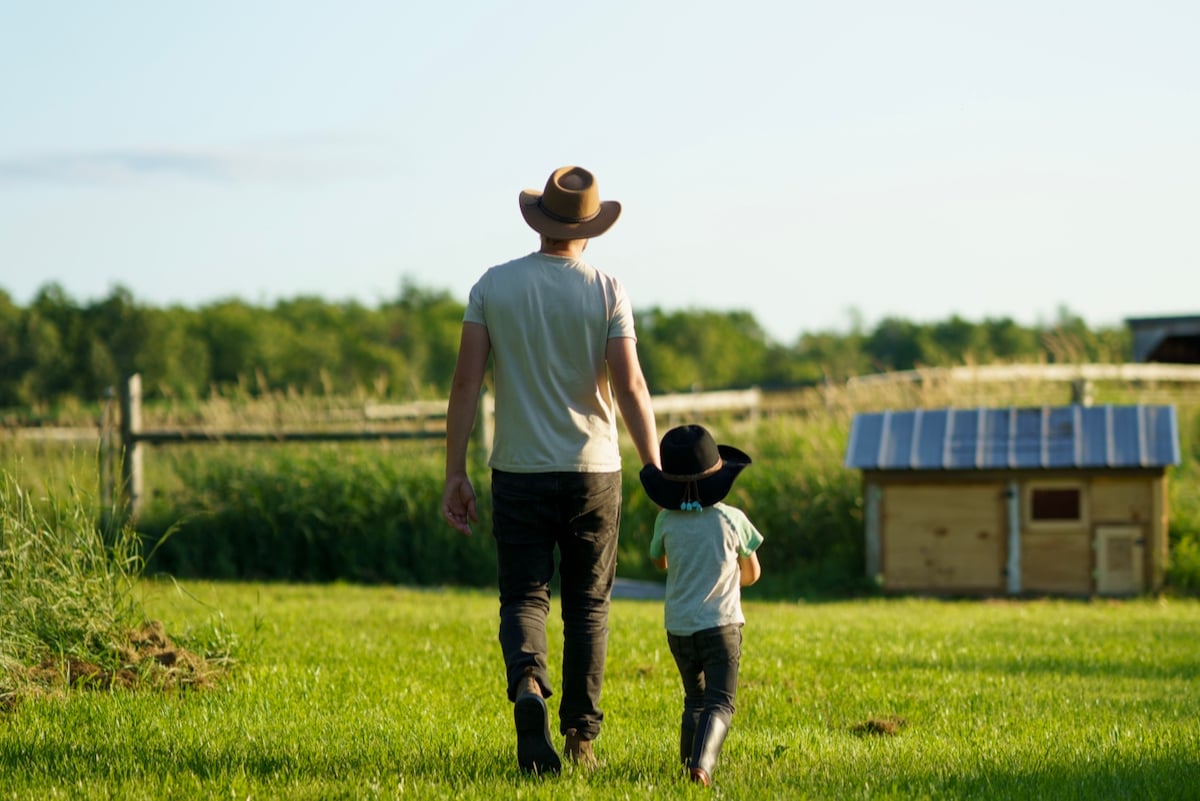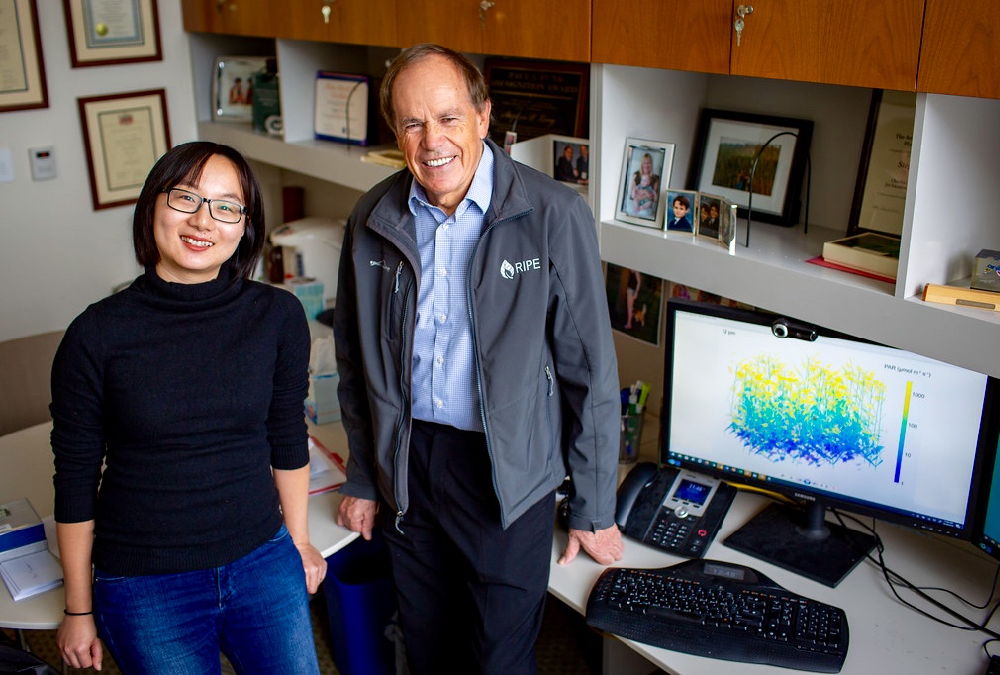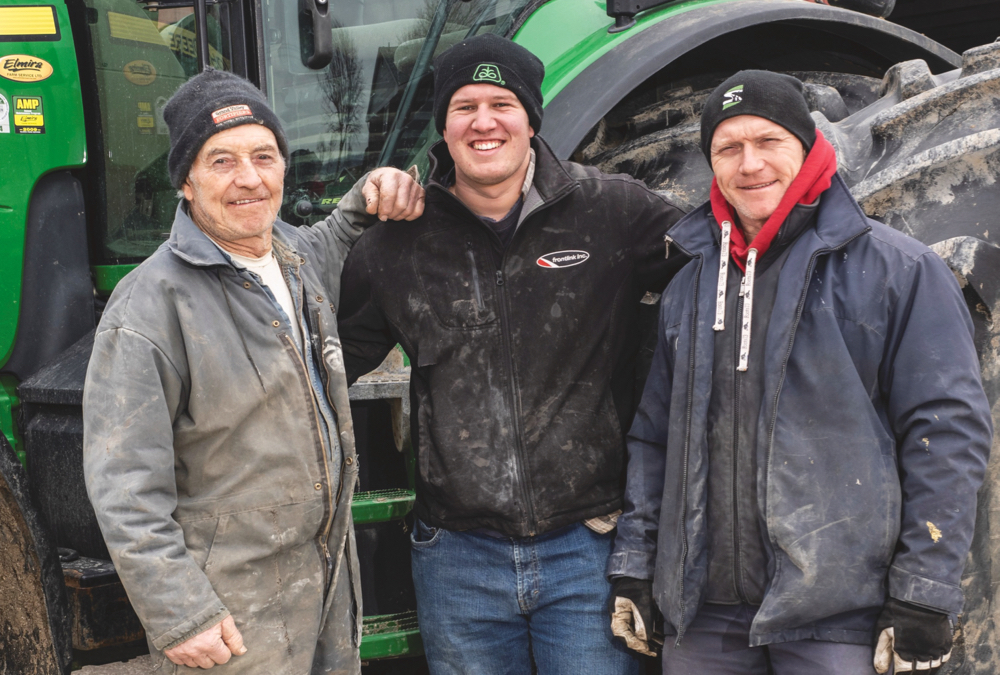These days, describing what it means to be a farmer is almost as challenging as, well, being a farmer. Part science, part art form, the job description also requires an expert understanding of agronomy, commodity markets, weather, emerging trends and technologies, consumer demand, environmental issues… the list goes on and on.
And as if that’s not complicated enough, every decision on the farm can have a long tail. Farmers often live with elements of past decisions hovering over their shoulders while they tend to the present, ever mindful of what the future will bring.
Read Also

A new spin on farm legacy
What does farm legacy look like for the next generation.
Adam Ireland understands the delicate dance involved in farming today. He has a tremendous respect for the past, he understands his place in the present and he grasps just how quickly the future can be upon him.
Ireland is part of Albadon Farms, his family’s dairy operation near Teeswater, Ont., with land at the very bottom of Bruce County and some south into Huron County. Ireland calls it a traditional family dairy farm except for the fact that he has little to do with the dairy side of the operation, which is managed by his brother Josh.
“We’ve since peeled off and my interest is more on the cropping side,” says Ireland, who returned home to the farm after several years, working primarily in sales with HJV Equipment. “At this point, I’m growing all of the forages and doing all of the field work to feed the cows but we’re also doing cash crops as well.”
Ireland notes that he and Josh have been fortunate that their parents, Mark and Debbie, and their Uncle Dave and Aunt Joyce have made the succession of the farm business as seamless as possible. Being allowed to split the duties and focus on specific interests in the overall operation of the farm has been a welcome change for Ireland.
Although he acknowledges farm succession is a serious hurdle for most farm families in Canada, his is a positive perspective where he and his brother have been given a free hand by their parents. Not all families are that progressive.
“As a 30-something farmer, we’ve come through succession — and I guess we’re still in it because we haven’t started on the next phase for the next generation,” says Ireland.
The planning process for that phase will involve Adam’s wife Julie and their two children Mac and Elyse, along with Josh and his wife Marjan and their four children Joel, Tyson, Emily and Andrew.
By the numbers
In 2000, the Winnipeg Summit on Family Farm Succession found that two to four per cent of farmers had a written succession plan. In July 2017, a report from the CBC — citing numbers from Statistics Canada a year earlier — indicated that figure had jumped to eight per cent. There are still farmers aged 75 or older who are the primary managers of the farm while children in their 50s have little control. At the same time, their grandchildren wait to become active parts of the operation.
Ireland is concerned when someone in their 40s or 50s is working on the farm with little of the decision-making power for that operation. He can understand they might not have full control but believes there’s a price to be paid for such lengthy delays in turning over the management of the farm.
“There’s a stress to it, and the later in life you’re introduced to that stress, the harder it is on you,” says Ireland. “I just don’t understand the delay, and I’m blessed that my folks — our senior generation — was quite willing to start the process and they did a very good job in stepping back in the past number of years.”
It becomes a matter of engagement: without a full commitment, it has to be harder to contribute that full “110 per cent” when the return on your investment is less, however much it might be. Without that involvement, a next-generation farmer may not grasp the gravity of the decisions being made, or how they’re being made, adds Ireland. Every farm is growing and running tight on the margins, and a farmer who’s not engaged in that situation may not understand the influences the operation — and the operators — are facing.
“When I was done school, I did come home for a year before Josh came home, and at that time, I didn’t have the reins, didn’t have much of the decision-making, and it was easy to walk away when there were other opportunities,” says Ireland. “Then my brother came home to run the dairy and take up the slack. But if you’re not at the table making decisions, you don’t have that sense of value.”
Ireland stresses that that’s not always the case for all farmers or farm families: some of the “next-gen” farmers gladly forego the stress of ownership or primary management. They’re content to stay in the background without having that vested interest. That’s why it’s important to acknowledge the parents and grandparents, he notes.

As important as it is for the younger farmers to be invested and engaged, he has the utmost respect for the trials his father and family had to endure, building a farming operation through the 1980s and ’90s.
“You weren’t talking anywhere near the dollars, you didn’t have anywhere near the borrowing capacity… and just the struggle to build the operation up, I have a lot of respect for what the senior generation did,” says Ireland. “With that, when we sit around the board table today, everyone has a say and it’s very rare that a major decision is going to be made without consulting the senior generation.”
What’s a huge help in that situation is that the respect goes both ways: Adam and Josh have been part of a lot of changes in the operation, including the move to strip tilling five years ago. Their senior generation may have some questions but generally they’re been supportive and have become, in effect, cheerleaders for the initiatives brought forth. They may be hesitant in the beginning, but if they’re successful, they’re usually the biggest supporters — and Ireland says that’s fun to see.
And the door has to swing both ways, he insists. The younger generation may have new ideas and the desire, but there must be an acknowledgement to those who came before them, who paved the way for success in the present, as much as that older generation should allow for those new ideas and passions to take effect.
Changing environment
As much as he finds the slow pace of succession among farmers surprising, Ireland is also at a loss to explain why sustainability and soil health initiatives have been slow to take off. He and his brother are actively involved in building on work his father began in the 1990s with no-till soybeans. But Ireland believes the fear of failure — a very real fear for most — has delayed the uptake in soil health and sustainability measures.
The possibility of failure means the loss of an entire year’s efforts, and that can be a daunting fear to overcome. Yes, it can be argued that growers should start small — and that’s probably what most have done. But Ireland believes it’s important to emphasize the successes they’ve had, and to talk more about what he and his family are doing that is working well in the field.
“It’s maybe easier for us because we’re in a hilly area, and we see the erosion —it’s very easy to see the degradation of the hilltops,” he says. “And maybe that’s what sparked us to get going (with strip till).”
Ireland considers his family to be determined, more than innovative. He doesn’t find it difficult to be on the early side of the adoption of new ideas or technologies and he insists there’s still much to learn and a lot of challenges to overcome. But the success is out there, often among peers, and that’s why he insists on engaging in those discussions and sharing the stories of success.
One such success story involves one of Ireland’s fields that was characterized by three distinct zones: the middle was the best-yielding, the headlands the poorest and the back of the field somewhere in between.
With reduced tillage and cover crops, Ireland has managed to raise the yields on those poorer sections, not to point where they’re even, but certainly higher. And that field was last tilled about eight years ago.
Ireland also points out that having dairy manure is a huge benefit in the chase for improved soil health.
Giving back — to the future
For farming, there’s the recognition of the past, managing in the present and for Adam Ireland, there’s the service to the community that works towards building a better future. It’s a unique trait of the farming and rural community, where the need to give back to the local economy and management of a town or municipality is becoming more of a necessity. As rural communities and the number of farmers continue to shrink, the need for commitment among residents has never been greater. Ireland understands that, which is why he contributes in as many ways as he can.

“In the ag community, I’m a member of the Ontario Soil Health Network, a director for the Ontario Bean Growers and a director with the Ontario Soil and Crop Improvement Association (OSCIA),” says Ireland. He acknowledges that it’s a time investment that often takes him away from his duties at home, but it’s also a welcome respite from those duties. “I’d like to do more and I’d like to see more people do just a little bit.”
Farmers, like other entrepreneurs and service providers, are much sought-after where representation with local organizations and political offices are concerned. Their experience and outlook on the community in which they live provide them with a rare blend of practical knowledge and business acumen. That’s a reflection of their level of engagement and understanding of the influences affecting local government or an organization like the OSCIA.
Ireland sees that and believes it’s vital that farmers give back to their rural communities.
“I’ve always found it interesting that when we look at different participation levels in government, no matter which level you’re looking at, there’s a higher rate of participation amongst rural residents,” he adds. “I think that’s a credit to rural folks.”
This article was originally published in the October 2018 issue of the Soybean Guide.
















